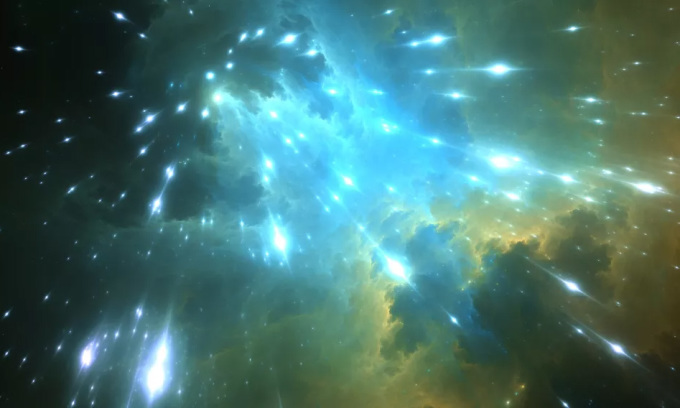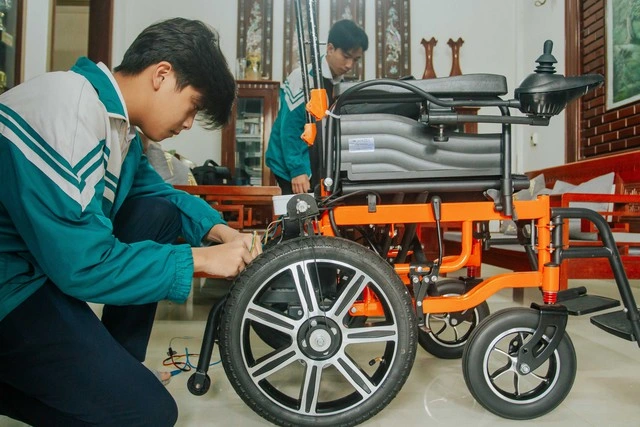Scientists develop global positioning system that can track underground movements using powerful cosmic rays.

Illustration of cosmic rays hitting Earth from space. Photo: Shutterstock
Cosmic rays are high-energy particles that originate in outer space, including sources such as the Sun, distant galaxies, supernovae, and other celestial bodies. Although humans cannot see or feel cosmic rays directly, they are constantly bombarding Earth from outer space. In fact, they are so abundant that scientists estimate that one cosmic ray strikes one square centimeter of Earth's surface every minute.
A research team led by Professor Hiroyuki Tanaka from the University of Tokyo used cosmic rays to develop a global positioning system that can track movements underground, Interesting Engineering reported on June 18. The new research was published in the journal iScience.
When cosmic rays enter Earth’s atmosphere, they collide with molecules and atoms in the air, creating secondary particles called muons. Muons are fundamental subatomic particles that are similar to electrons but 207 times heavier. Muons can penetrate solid objects, depending on the density of the object. For example, rocks and buildings absorb many muons because of their high density.
Meanwhile, GPS relies on traditional radio waves, which are weaker at higher altitudes and are prone to scattering, making it difficult to use to detect movement underground.
Tanaka and his colleagues exploited the properties of cosmic rays to map hard-to-reach places like volcanoes, nuclear reactor cores, and pyramids. They developed a new wireless positioning system using muons called MuWNS. The system consists of reference detectors on the surface and a receiving detector underground to detect the path of the muons. By analyzing the timing and direction of the muons, MuWNS determines the position of the receiving detector underground relative to the reference detector on the surface.
All the data collected is then used to reconstruct the muon paths to create a model or map of the subterranean area. The map can provide valuable information, such as the composition and density of the materials the muons pass through, allowing experts to visualize underground structures and geological features.
The team tested the new MuWNS system by placing a receiver in a basement and placing four reference detectors on the sixth floor of a building. They then successfully reconstructed the path of the person in the basement by screening the cosmic rays picked up by the detectors.
The team has demonstrated the world’s first cosmic ray-based global positioning system that could support future search and rescue missions and volcano monitoring. Next, they plan to improve MuWNS so it can be integrated into smartphones.
Thu Thao (According to Interesting Engineering )
Source link


![[Photo] Special relics at the Vietnam Military History Museum associated with the heroic April 30th](https://vstatic.vietnam.vn/vietnam/resource/IMAGE/2025/4/3/a49d65b17b804e398de42bc2caba8368)
![[Photo] Comrade Khamtay Siphandone - a leader who contributed to fostering Vietnam-Laos relations](https://vstatic.vietnam.vn/vietnam/resource/IMAGE/2025/4/3/3d83ed2d26e2426fabd41862661dfff2)

![[Photo] Prime Minister Pham Minh Chinh receives CEO of Standard Chartered Group](https://vstatic.vietnam.vn/vietnam/resource/IMAGE/2025/4/2/125507ba412d4ebfb091fa7ddb936b3b)
![[Photo] Prime Minister Pham Minh Chinh receives Deputy Prime Minister of the Republic of Belarus Anatoly Sivak](https://vstatic.vietnam.vn/vietnam/resource/IMAGE/2025/4/2/79cdb685820a45868602e2fa576977a0)






























































































Comment (0)